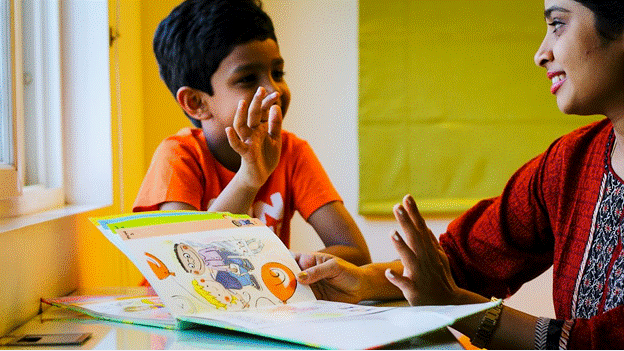Effective Reading Interventions for Kids with Learning Disabilities. It is common for children to have difficulty reading, but the issue can be particularly frustrating for kids with learning disabilities. While children with typical development read at their own pace and may pick up some reading strategies along the way. Children with learning disabilities need more guidance. Many proven teaching methods can help your child read more successfully. Even with a specific learning disability like dyslexia or attention deficit disorder (ADHD).
1) Overall reading ability:
Children have to read to be taught how to improve their skills, so try being patient with your child if they are struggling and need extra time and encouragement. Keep in mind that your child can struggle not only with decoding (sounding out words and syllables) but also fluency, comprehension, and text-to-self connections. If you suspect that your child’s issue may lie outside of these factors, consult an expert for guidance on other causes such as auditory processing disorders, autism spectrum disorder (ASD), or nonverbal learning disabilities (NLD).
2) Fluency:
Fluency refers to a reader’s ability to read texts easily and effortlessly. Kids with fluency issues often omit, add or substitute sounds when they are reading. Which can affect their comprehension and feelings of self-efficacy. Kids with learning disabilities need to understand that the goal of fluency practice isn’t necessary to read more quickly. But to become more automatic and comfortable with the process of reading words aloud. To assist them in this process, introduce your child to high-frequency and sight words. So they don’t have to spend too much energy analyzing how a word should sound and whether it makes sense in the sentence.
3) Comprehension:
It is an essential part of reading, but it is also more difficult for children with learning disabilities to Master, as they may have trouble comprehending even a sentence that they can easily read word for word. A few different factors can affect your child’s comprehension skills. For example, kids with ADHD often have trouble focusing on longer texts and suspended words animation when reading aloud. Please encourage them to highlight or underline key points in the text to know what to focus on while reading. They should also try recording themselves reading a story and then playing it back faster, which is another great strategy for improving fluency.
4) Concepts:
Concepts are about how children understand written language, including phonics and other language rules. Try implementing a reading program that uses explicit instruction to improve your child’s grasp of these skills. The systematic and predictable nature allows kids with learning disabilities to see the different steps they need to take when reading words and sentences.
5) Vocabulary:
A large vocabulary is a must for children to become advanced readers. As a parent, you can teach them new words by making their encounters with them more memorable, such as by explaining the meaning through colorful descriptions or even acting out word meanings if appropriate. Also, make sure they have plenty of opportunities to use the new words that they are learning. For instance, please encourage your child to come up with different ways to use a word when playing games or at school.
Conclusion:
Several strategies can help readers with learning disabilities, including explicit instruction, phonemic awareness, fluency practice, and concept development. Be patient with your child if they are struggling to read more successfully.
Author Bio:
Sarah has been writing for a decade and now for the Quran teacher near me Website. She obtained her Master’s degree at the University of London. Her main objective is to write insightful content for those who read and like it.














